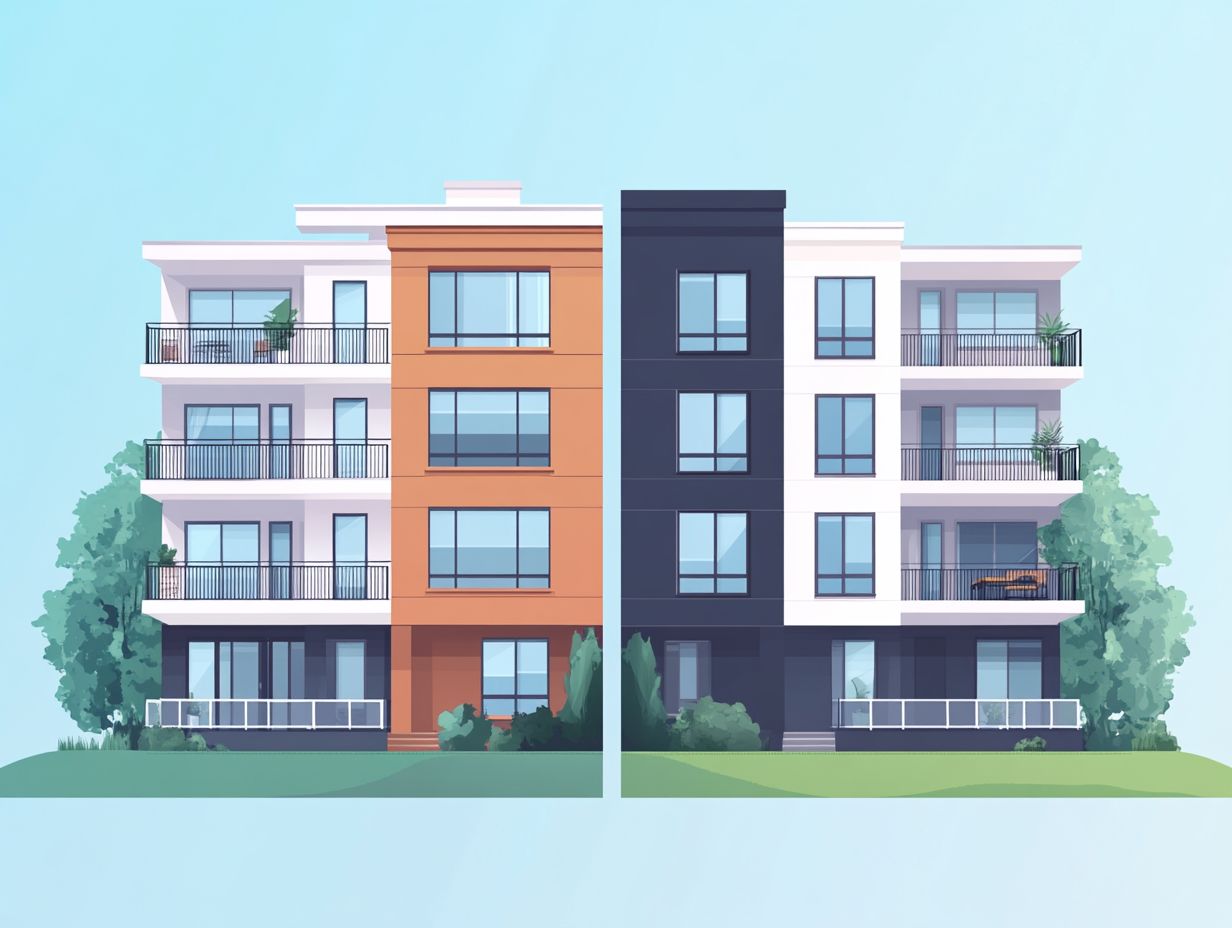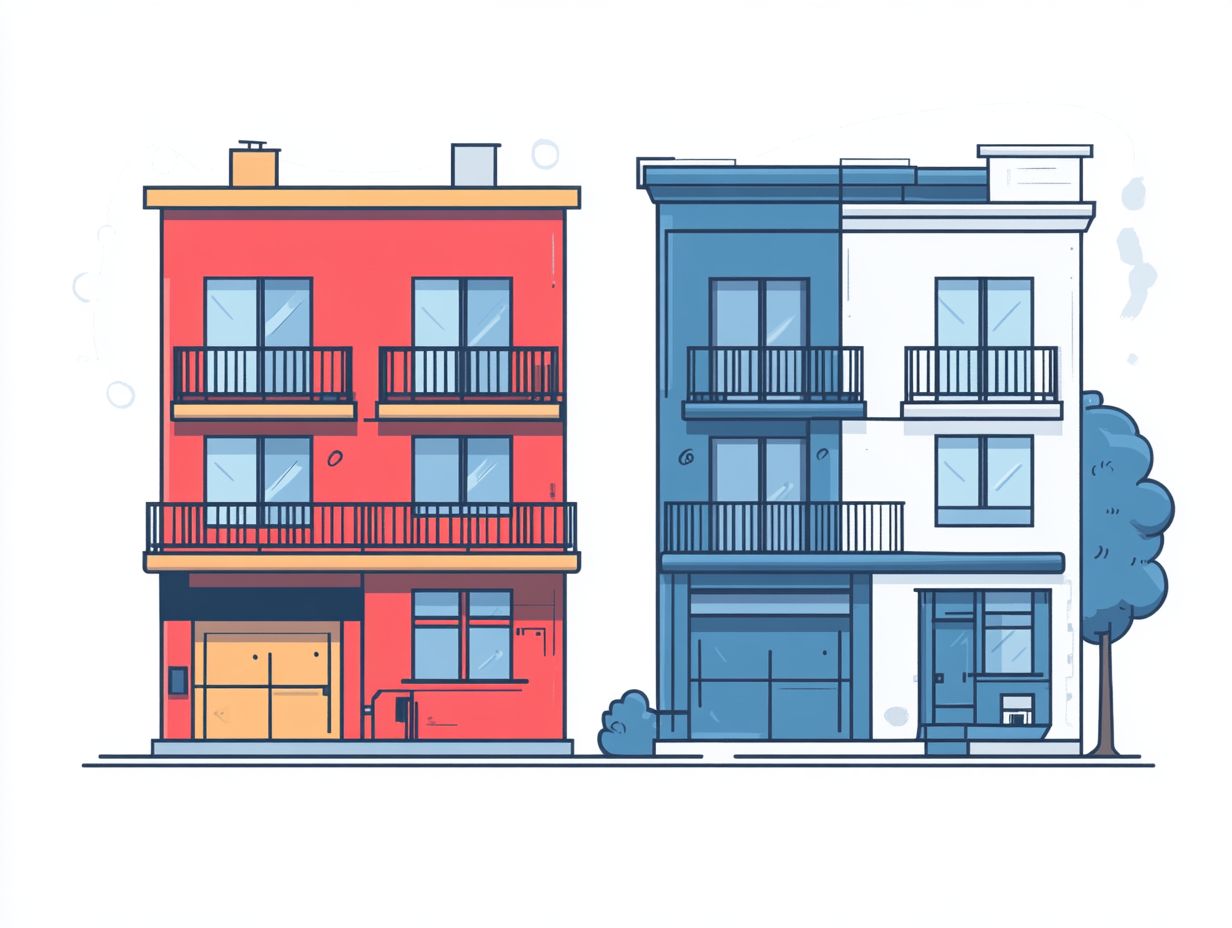Comparing Home Insurance Options: HO4 vs HO6
Home insurance is your safety net. It brings peace of mind when unexpected damage or loss happens.
Whether you re a tenant exploring coverage with an HO4 policy or a condo owner considering HO6 options, understanding the details of each is crucial for your protection.
This article covers the key features, limitations, and differences between HO4 and HO6 policies. It will guide you to determine which one aligns best with your unique needs.
It also examines the factors that influence costs and coverage. This empowers you to make an informed decision tailored specifically to your situation. Dive in and uncover the right protection for your home!
Contents
- Key Takeaways:
- Understanding Home Insurance
- HO4 Home Insurance Policy
- HO6 Home Insurance Policy
- Key Differences between HO4 and HO6
- Which Policy is Right for You?
- Cost Comparison
- Frequently Asked Questions
- What is the difference between HO4 and HO6 home insurance options?
- Which type of home insurance is better for renters: HO4 or HO6?
- What does HO4 home insurance cover?
- What does HO6 home insurance cover?
- Can I have both HO4 and HO6 insurance policies?
- How do I know which home insurance policy is right for me?
Key Takeaways:

- Home insurance is your shield against property damage and loss.
- HO4 and HO6 policies vary in their coverage for property, personal items, liability, and living expenses.
- Choose the right policy based on your property type and needs. Comparing costs is important to find the best fit for your budget.
Understanding Home Insurance
Understanding the details of home insurance is essential for both homeowners and renters, as it safeguards one of their most substantial investments.
Whether you choose a homeowners insurance policy like HO-1, HO-2, or HO-3 or prefer renters insurance or mobile home options like HO-4, HO-6, or HO-7, each policy offers distinct coverage choices.
These include personal property coverage, liability coverage, and various valuation methods, such as replacement cost versus actual cash value. Understanding these nuances gives the power to you to make informed decisions that best protect your assets.
What is Home Insurance?
Home insurance, often called homeowners insurance, is a vital form of property insurance designed to offer you financial protection against various risks, including damage to your home, liability for injuries, and loss of personal items.
This coverage typically includes several crucial elements, creating a robust safety net for your peace of mind.
- Property protection shields your home from incidents like fire, storms, or vandalism, while covering your personal items, such as furniture and electronics.
- Liability coverage protects you from legal claims if someone gets injured on your property, like a slip-and-fall accident.
By investing in home insurance, you position yourself to mitigate potential financial strains, giving you the confidence to face unexpected events with greater security and tranquility.
Why is it Important?
Homeowners insurance is essential for securing your financial future. It provides protection against significant losses stemming from damage, theft, or liability claims.
This type of insurance acts as a safety net for your personal assets, covering not only the physical structure of your home but also the belongings within it.
A study by the National Association of Insurance Commissioners reveals that nearly one in 20 insured homes files a claim in a given year. This highlights just how often incidents occur that can lead to financial setbacks.
Without homeowners insurance, an unexpected event like a kitchen fire or a natural disaster could lead to crippling out-of-pocket expenses, which can easily reach into the thousands. Homeowners in regions vulnerable to severe weather, such as hurricanes or floods, are particularly at risk for costly repairs without adequate coverage.
Therefore, investing in homeowners insurance isn’t merely a precaution; it s a fundamental aspect of responsible homeownership.
HO4 Home Insurance Policy
The HO-4 home insurance policy, often referred to as renters insurance, is tailored specifically for tenants like you.
It offers crucial personal property coverage and liability protection, safeguarding you against losses from theft, fire, or other damages that may occur in your rented space.
Coverage and Limitations
The coverage and limitations of an HO-4 insurance policy include personal property protection for your belongings, such as furniture and electronics, as well as liability coverage that shields you from legal claims.
Designed specifically for renters, this policy offers essential protection against risks like theft, fire, and certain water damage. It s important to know about common exclusions, such as damages from natural disasters like floods or earthquakes, which may require separate policies.
Understanding coverage limits is vital. These limits can vary significantly based on geographic location.
For instance, if you live in an area prone to hurricanes, you might encounter different requirements and costs. By grasping these nuances, you can ensure that you re not left vulnerable when the unexpected happens.
HO6 Home Insurance Policy

The HO-6 home insurance policy, commonly known as condominium insurance, offers crucial protection tailored specifically for your needs. It covers your personal property, liability, and any improvements you’ve made to your condo unit.
This specialized coverage sets it apart from standard homeowners insurance policies. It ensures that you have the right safeguards in place for your unique living situation.
Coverage and Limitations
The coverage and limitations of an HO-6 insurance policy primarily address personal property within your condo and liability for legal claims. It also includes limits that depend on what your property is worth.
This policy is essential for you as a condo owner, as it typically safeguards your personal belongings and any improvements made to your unit. It also offers protection against certain incidents like fire or theft.
However, be aware of common exclusions, which may include damage from natural disasters, floods, or general wear and tear. Understanding your policy’s coverage limits is vital, as it defines the financial protection available to you in the event of a claim.
Being informed about these details can help you avoid unexpected surprises during unfortunate circumstances. Make sure you understand your policy to avoid surprises when you need it most!
Key Differences between HO4 and HO6
The key distinctions between HO-4 and HO-6 home insurance policies revolve around their intended audiences and the specific types of coverage they offer.
While HO-4 is tailored for renters, providing essential protection for personal belongings and liability, HO-6 is crafted specifically for condominium owners. This means that the coverage varies significantly, influencing aspects such as property coverage, personal property coverage, and liability coverage.
Understanding these differences is crucial in selecting the right policy for your needs.
Property Coverage
Property coverage in HO-4 insurance is designed specifically to protect your personal belongings within a rented space. In contrast, HO-6 insurance extends its protection to enhancements made to a condo unit as well as your personal property inside it.
With HO-4, you’re covered for items like clothing, furniture, electronics, and kitchenware, providing you with a sense of security as a renter. However, certain exclusions may apply items such as expensive jewelry or valuable artwork might require separate coverage to keep them secure.
HO-6 insurance not only safeguards your personal property, such as appliances and furnishings but also insures any modifications you ve made to the unit, like renovated kitchens and custom fixtures. Exclusions for HO-6 policies may include damage from natural disasters or negligence, making it essential for you to thoroughly understand the details of your policy.
Personal Property Coverage
Personal property coverage in an HO-4 insurance policy protects your belongings as a tenant. In contrast, an HO-6 insurance policy not only covers your personal items but also any changes you have made to your condo.
This distinction is crucial for renters and condo owners. An HO-4 policy covers your furniture, electronics, and clothing against risks like theft or damage, giving you peace of mind in your rental.
On the other hand, an HO-6 policy protects both your personal items and improvements, such as upgraded flooring or custom cabinetry. This reflects the investments you have made in your home.
Understanding the coverage limits is essential. Exceeding these limits can lead to significant out-of-pocket costs in case of a loss. Therefore, it s important to review what items are included and decide if additional coverage is necessary to fully protect your assets.
Liability Coverage
Liability coverage protects you against legal claims arising from injuries or damages that occur within your rented or owned space.
This coverage is vital as it goes beyond protecting physical property; it acts as a financial shield against losses from incidents in your home.
For instance, if a guest trips and falls or someone gets injured due to a maintenance issue, this liability coverage can take care of legal fees and medical expenses, relieving you of a considerable burden.
Policy limits can vary significantly depending on your provider and unique situation, making it crucial for you to carefully evaluate your needs.
If you have higher assets, you might want to consider increasing those limits to ensure comprehensive protection against potential claims.
Additional Living Expenses Coverage

Both HO-4 and HO-6 insurance policies often come with additional living expenses coverage, designed to help you pay for temporary housing and related costs if your unit becomes uninhabitable due to a covered loss.
This coverage proves invaluable in situations such as fire damage, water leaks, or severe storm impacts where extensive repairs become necessary.
For example, if smoke from a nearby fire damages your apartment, the insurance helps cover hotel stay costs, meal expenses, and even laundering your personal items.
If structural repairs due to a roof collapse force you out of your home, the policy typically reimburses you for alternative accommodations and other essential living expenses during the restoration period, ensuring financial stability during those stressful times.
Which Policy is Right for You?
Choosing whether an HO-4 insurance policy or an HO-6 insurance policy suits you best hinges on various factors.
Consider your living situation, the type of dwelling you occupy, and your specific personal property requirements. Each option has distinct features tailored to different circumstances, so evaluating these elements thoughtfully will guide you toward the right choice.
Factors to Consider
When choosing between homeowners insurance options like HO-4 and HO-6, consider your personal property needs, financial situation, and the specific risks tied to your living arrangements.
Understanding the risk profile of your neighborhood can greatly shape your decision. For instance, if you live in an area susceptible to natural disasters, opting for a more comprehensive policy might be a necessity rather than a luxury.
Assessing the total value of your possessions ensures you have adequate coverage in the event of a loss. It’s crucial to review your deductibles (the amount you pay out of pocket before insurance kicks in) and coverage limits, as these factors directly affect your out-of-pocket expenses during claims.
Engaging with insurance professionals can provide you with personalized advice, while online comparison tools offer quick and efficient evaluations of various policy options. By adopting a holistic approach, you address your immediate needs and pave the way for long-term security.
Cost Comparison
Get ready to discover notable differences in premiums and deductibles when comparing homeowners insurance policies like HO-4 and HO-6.
These variations are influenced by factors such as coverage limits and the unique risks tied to each policy. Understanding these distinctions is essential for making an informed choice that best suits your needs.
Premiums and Deductibles
Premiums and deductibles for homeowners insurance policies like HO-4 and HO-6 can vary widely. They depend on factors such as coverage limits, location, and your personal situation.
Insurers evaluate many aspects when setting these costs. This includes the property’s age, construction materials, and even local crime rates.
Understanding how premiums and deductibles are determined empowers you to make informed choices. For instance, a higher deductible usually means lower premiums, so assess your finances carefully.
Installing safety features like security systems or smoke detectors can lead to discounts. Knowing about these costs is crucial for budgeting and avoiding unexpected financial burdens.
Frequently Asked Questions
What is the difference between HO4 and HO6 home insurance options?

HO4 is a renters insurance policy that covers personal belongings and liability. HO6 is for condominiums and covers the interior of the unit along with personal belongings.
Which type of home insurance is better for renters: HO4 or HO6?
It depends on your living situation. If you rent and don’t own the property, HO4 is more suitable, while HO6 is best for condo owners.
What does HO4 home insurance cover?
HO4 covers personal belongings, liability, and living expenses in case of events like fire or theft. It also includes medical payments for injuries on the property.
What does HO6 home insurance cover?
HO6 covers the interior of the condo unit, personal belongings, and liability for damages or injuries inside the unit. It also includes loss of use and medical payments for guests injured on the property.
Can I have both HO4 and HO6 insurance policies?
Yes, you can have both if you rent out a condo you own. The HO4 policy covers your belongings, while HO6 covers the unit’s interior. Always check with your insurance provider to avoid overlapping coverage.
How do I know which home insurance policy is right for me?
To choose the right policy, think about your living situation and the value of your belongings. Comparing quotes from different providers can help you find the best coverage at a good price.






